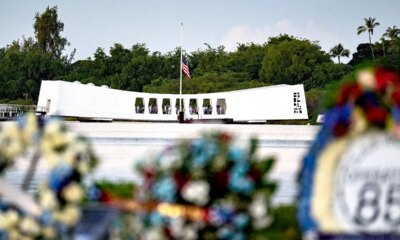HONOLULU (KHON2) — Poke is a dish created by Native Hawaiians and perfected by local immigrants. But according to online reviews, the best poke in the country is not from Hawaii. And one world-renowned chef who’s credited with poke’s popularity calls it a “slap in the face.”
People are willing to stand in long lines every day for poke. So to say the best in the country is not in Hawaii – that’s fighting words for some.
“So for you to say that, yeah, I kinda like scrap kine,” said Branden Machado, poke connoisseur.
“Nah, I laugh, I laugh,” said Mike Sablay, poke connoisseur.
The restaurant in Big Bear, California, is called Tropicali and was recently reported to have America’s best poke, based on Yelp.
“When I heard that, I was very upset, because I well know, and as you well know, and our millions of listeners and watchers of our station, they well know that the best poke is in Hawaii,” said Sam Choy, world-renowned celebrity chef/restaurateur.
“When I read that, I felt a little slighted,” said Chris Kam, Alicia’s Market. “Understandable, people from the mainland don’t really know what Hawaiian poke is about.”
With a large shark’s head as the front entrance, the decor – just like the menu – is said to be based on Hawaiian culture, but not to emulate it. So poke there – and elsewhere on the continent – looks much different from the poke bowls we’re used to seeing in Hawaii.
“It came with cucumbers, it came with won ton strips, I ordered the spicy one, so it came with the spicy sauce, and then I ordered unagi sauce on the side, and it tasted so good,” said one anonymous local who tried Tropicali and liked it. “It tasted so fresh, I was so surprised it was crazy.”
“That’s not poke, that’s like a salad,” said Kam.
“Nah, nothing can beat back home,” said Sablay. “Everything over here is like the best. Everything’s all local, everything’s all fresh.”
“Like on Oahu, we have the freshest fish, we have the best recipes, like and it’s not only us,” said Justin Tanioka, Tanioka’s Seafood & Catering. “It’s other companies around the island that have mastered poke.”
Since this is a Yelp award, having great Yelp reviews does help. Tropicali currently has more than 4,000 reviews and maintains a 4.9 Star rating. However, locals say to declare themselves the best in the country for a food that’s not only born in Hawaii, but beloved in Hawaii, is extremely bold.
“It’s definitely a slap in the face for all the poke makers in Hawaii who work unbelievably hard to create their magical dishes,” said Choy. “Two things. One, we use fresh fish. And the other one is tender loving care, TLC is in there. We’re putting our heart and soul in that. We’re representing our history, we’re representing our aina, we’re representing all the people in the past that made poke.”
“It’s all preference, and you know where you are,” said Tanioka. “But to me, the best poke in the world, honestly, is in Oahu.”
“Cuz check that out, Big Bear ain’t got nothing on this, my cuz,” said Machado. “We get the best poke in the world. Bumbye, we teach you.”










































